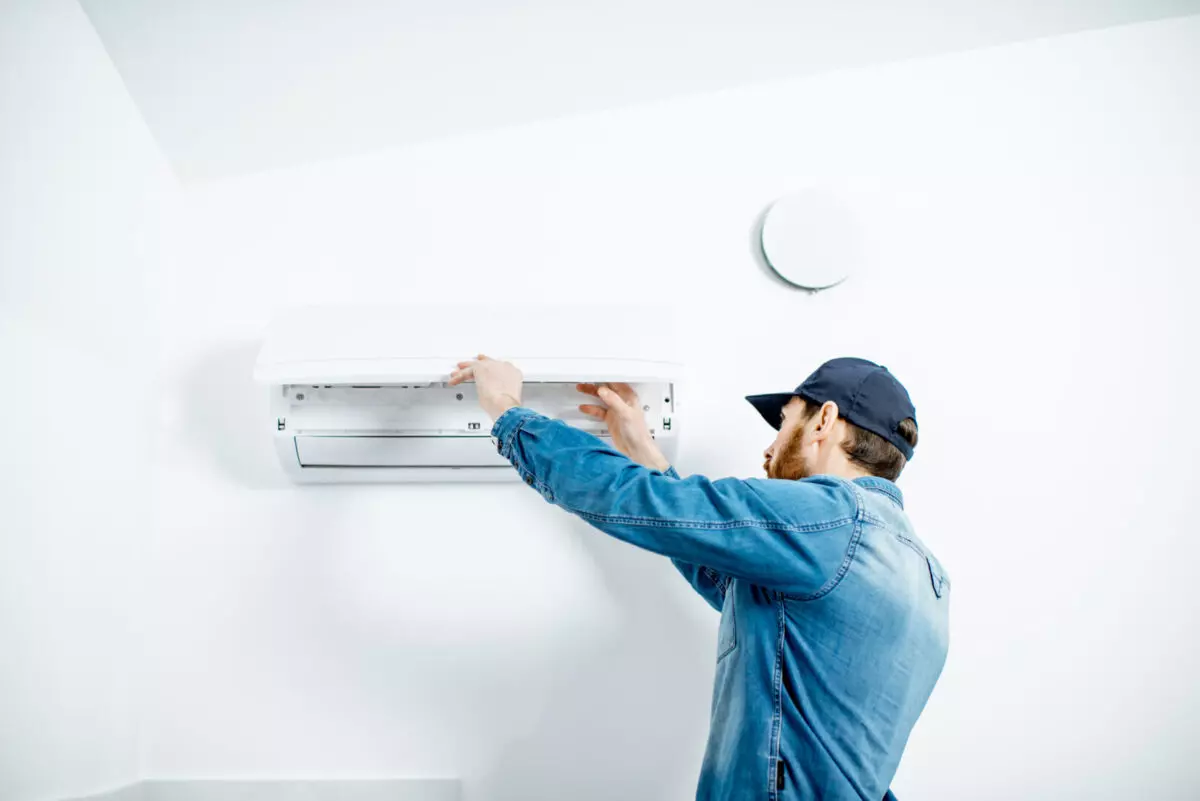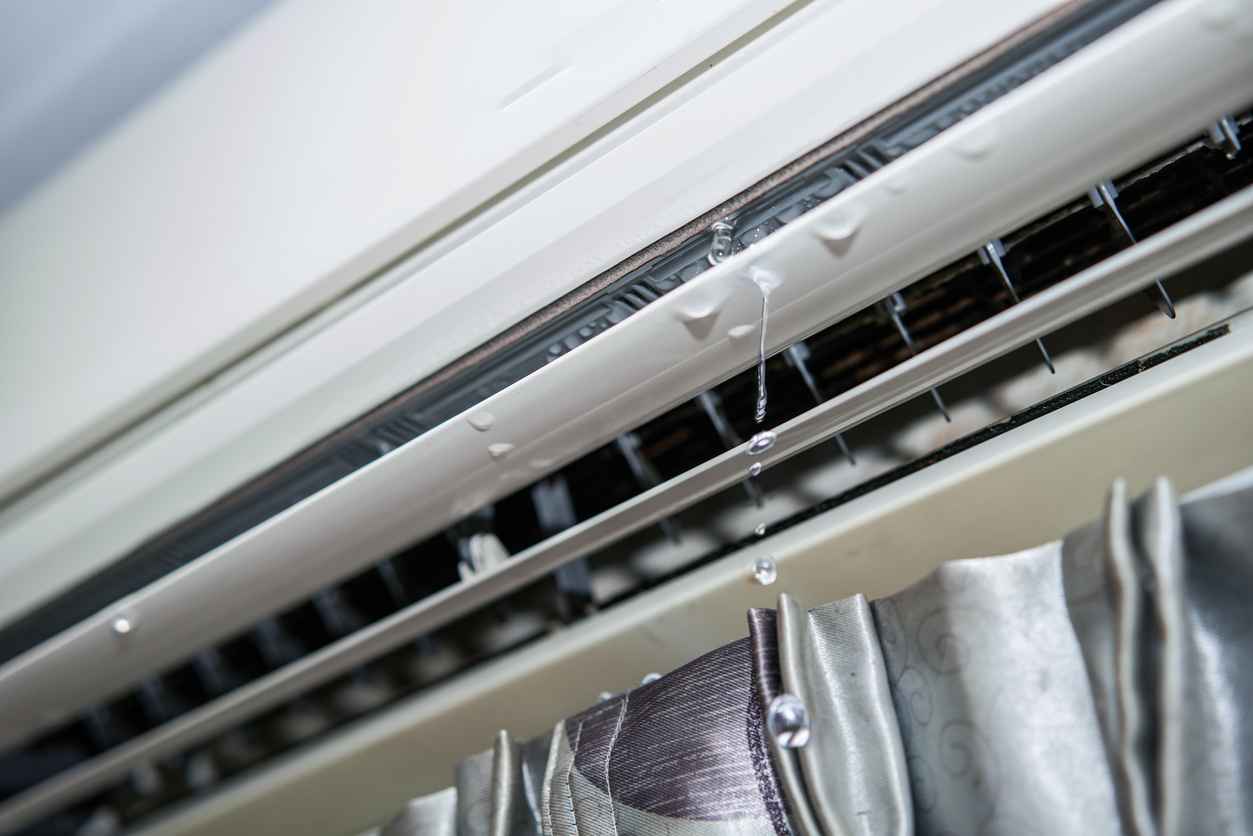How Do You Fix A Leaking Air Conditioner

A leaking air conditioner is more than just a nuisance; it's a sign that something isn't right within your cooling system. Ignoring the problem can lead to further damage, higher energy bills, and even health concerns due to mold growth. This guide helps you diagnose and address common AC leaks, empowering you to tackle simple fixes while understanding when professional help is necessary. Understanding the type of leak and where it's originating is the first step towards an effective repair.
Identifying the Source of the Leak
Before diving into any repairs, pinpoint the source of the leak. Common culprits include:
- Refrigerant Leaks: Evaporator coils, condenser coils, and refrigerant lines are susceptible to leaks. Refrigerant leaks often present with oily residue around the leak point.
- Condensate Drain Line Issues: Clogs or disconnections in the condensate drain line are frequently the cause of water leaks inside the house.
- Condensate Pan Problems: A cracked or corroded condensate pan will fail to collect water properly, leading to leaks.
- Improper Installation: Issues like incorrectly sealed ductwork, or a poorly positioned AC unit can create condensation or leaks.
Careful observation is crucial. Check around the indoor unit (air handler), the outdoor unit (condenser), and along refrigerant lines for any signs of moisture, ice buildup, or oily residue. Is the water clear, or does it have a distinct odor?
Safety First
Before attempting any AC repair, prioritize safety:
- Turn off the power: Disconnect the power to the AC unit at the breaker box.
- Wear protective gear: Gloves and eye protection are essential to avoid contact with potential contaminants or sharp components.
- Work in a well-ventilated area: If dealing with refrigerant, ensure adequate ventilation.
- Never attempt repairs beyond your skill level: Contact a qualified HVAC technician for complex issues like refrigerant leaks.
Addressing Condensate Drain Line Clogs
A clogged condensate drain line is one of the most common causes of AC leaks and often relatively simple to fix. Here's how:
Tools and Materials
- Wet/dry vacuum
- Stiff wire or plumbing snake
- Bleach or vinegar
- Bucket
Step-by-Step Instructions
- Locate the drain line: The condensate drain line is usually a PVC pipe extending from the indoor unit. It may drain outside or into a floor drain.
- Inspect the drain line opening: Look for any visible blockage or debris at the drain line opening.
- Clear the blockage:
- Vacuum method: Attach a wet/dry vacuum to the end of the drain line and create a tight seal. Turn on the vacuum to suck out any clogs.
- Wire/snake method: Carefully insert a stiff wire or plumbing snake into the drain line to break up the clog. Be gentle to avoid damaging the pipe.
- Flush the drain line: Pour a cup of bleach or vinegar into the drain line to kill any remaining mold or algae.
- Monitor the drain line: Observe the drain line to ensure water flows freely.
Cleaning or Replacing the Condensate Pan
If the condensate pan is cracked or overflowing, it needs attention.
Tools and Materials
- Wet/dry vacuum
- Mild detergent
- Clean cloths or rags
- Replacement condensate pan (if necessary)
Step-by-Step Instructions
- Turn off the power: Disconnect power to the air handler at the breaker.
- Access the condensate pan: This may require removing panels or covers from the air handler. Refer to your unit's manual for specific instructions.
- Drain the pan: Use a wet/dry vacuum to remove any standing water in the pan.
- Clean the pan: Scrub the pan with mild detergent and water to remove any dirt, mold, or algae. Rinse thoroughly and dry.
- Inspect for damage: Check for cracks, corrosion, or other damage. If the pan is damaged, replace it with a new one.
- Reassemble: Reinstall the condensate pan and reassemble the air handler.
- Restore power: Turn the power back on at the breaker.
- Monitor: Keep an eye on the condensate pan to ensure it's functioning correctly and not leaking.
Addressing Minor Ductwork Leaks
Leaky ductwork can lead to significant energy loss and reduced cooling efficiency. Small leaks can sometimes be sealed yourself.
Tools and Materials
- Aluminum foil tape (UL 181A listed)
- Mastic sealant (UL 181A listed)
- Brush or applicator for mastic
- Clean cloths or rags
Step-by-Step Instructions
- Locate the leaks: Inspect ductwork for any visible gaps or holes, paying close attention to seams and joints.
- Clean the area: Clean the area around the leak with a damp cloth to remove any dirt or debris.
- Apply foil tape: Apply aluminum foil tape over the leak, ensuring it adheres firmly to the ductwork. Overlap the tape edges for a secure seal.
- Apply mastic sealant (optional): For a more durable seal, apply mastic sealant over the foil tape or directly to the leak. Use a brush or applicator to spread the sealant evenly.
- Allow to dry: Allow the mastic sealant to dry completely before using the AC unit.
When to Call a Professional
While some AC leaks are manageable for homeowners, others require the expertise of a qualified HVAC technician. Call a professional if:
- You suspect a refrigerant leak: Handling refrigerant requires specialized equipment and training.
- You're uncomfortable working with electrical components: AC units contain high-voltage components that can be dangerous.
- You've tried the DIY solutions and the leak persists: This indicates a more complex underlying issue.
- You notice ice buildup on the evaporator coil: This could be a sign of a refrigerant issue or airflow problem.
- You lack the necessary tools or expertise: It's always better to be safe than sorry.
Refrigerant leaks, in particular, are best left to professionals. Attempting to repair a refrigerant leak yourself can be dangerous and may violate environmental regulations. Symptoms of a refrigerant leak include poor cooling performance, hissing sounds near the unit, and the presence of oily residue.
Estimated Repair Costs
The cost of repairing an AC leak can vary depending on the source and severity of the problem. Here's a general estimate:
- Condensate drain line cleaning: $75 - $200
- Condensate pan replacement: $150 - $400
- Ductwork sealing: $200 - $600
- Refrigerant leak repair: $200 - $1500+ (depending on the size and location of the leak, and the type of refrigerant)
These are just estimates, and the actual cost may vary depending on your location, the HVAC technician's rates, and the specific parts required. Get quotes from multiple HVAC professionals before committing to any repairs.
Preventative Maintenance
Regular maintenance can help prevent AC leaks and other issues. Consider these preventative measures:
- Schedule annual AC tune-ups: A qualified HVAC technician can inspect your system, clean the coils, and identify potential problems before they escalate.
- Change air filters regularly: Clogged air filters restrict airflow, which can lead to ice buildup and leaks.
- Keep the outdoor unit clean: Remove any debris, such as leaves, branches, or grass clippings, from around the outdoor unit.
- Flush the condensate drain line annually: Pour a cup of bleach or vinegar into the drain line to prevent clogs.
By understanding the potential causes of AC leaks and taking proactive steps to maintain your system, you can avoid costly repairs and keep your home cool and comfortable. Remember, when in doubt, always consult with a qualified HVAC professional.
Remember to always prioritize safety when working with electrical appliances. If you're uncomfortable with any of the steps outlined above, call a professional HVAC technician. Proper AC maintenance will not only prevent leaks but also extend the lifespan of your unit. Regular checks on your condensate drain can save you from water damage and costly repairs. Finally, be aware of the signs of refrigerant leaks and never attempt to repair them yourself. Your safety and the environment depend on it.










